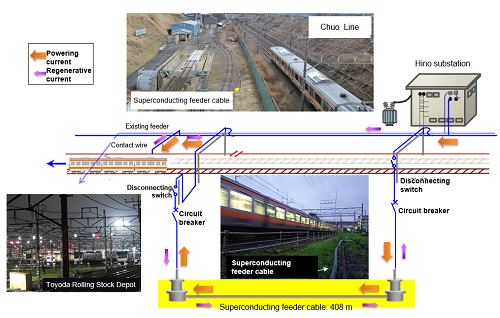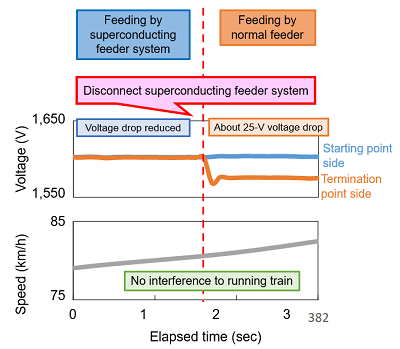21. Demonstration of a superconducting feeder system function for commercial lines
In DC electric railways, there are several issues such as regenerative brake cancellation and transmission loss affected by the electric resistance of a feeder to the supply power from a substation to a vehicle, and feeding voltage drop between substations. Given that a feeder cable using a high-temperature superconductor can transmit power with no electric resistance when cooled with liquid nitrogen, by applying it for feeders, a number of effects can be expected such as reducing feeding voltage drop and leveling the loads of substations, in addition to saving energy by reducing regenerative brake cancellations and transmission loss.
Therefore, specifications--including the withstand voltage of a superconducting feeder system required for connection to a commercial line for the cable part and the cooling equipment part---have been organized and a superconducting feeder system has been produced based on them. First, tests for conductivity and other factors were conducted to check that this system had the desired performance to satisfy the specifications.
Next, running tests using test cars were conducted by connecting the superconducting feeder system to the feeder of a commercial line in parallel (Fig. 1) to confirm that the voltage drop could be reduced along a 408-meter section to connect the superconducting feeder system for feeding one train set. In addition, a test to disconnect the system and the existing feeder was conducted assuming a disaster or an accident to stop the superconducting feeder system, and it was demonstrated that the system could be disconnected smoothly without interfering with a running train (Fig.2).
As a future task, development will be continued to accumulate technical knowledge such as that on temperatures and voltage drops for cooling performance as well as conducting performance to enable the desired support required by service conditions that vary by each section, with the aim of realizing a more practical system.


